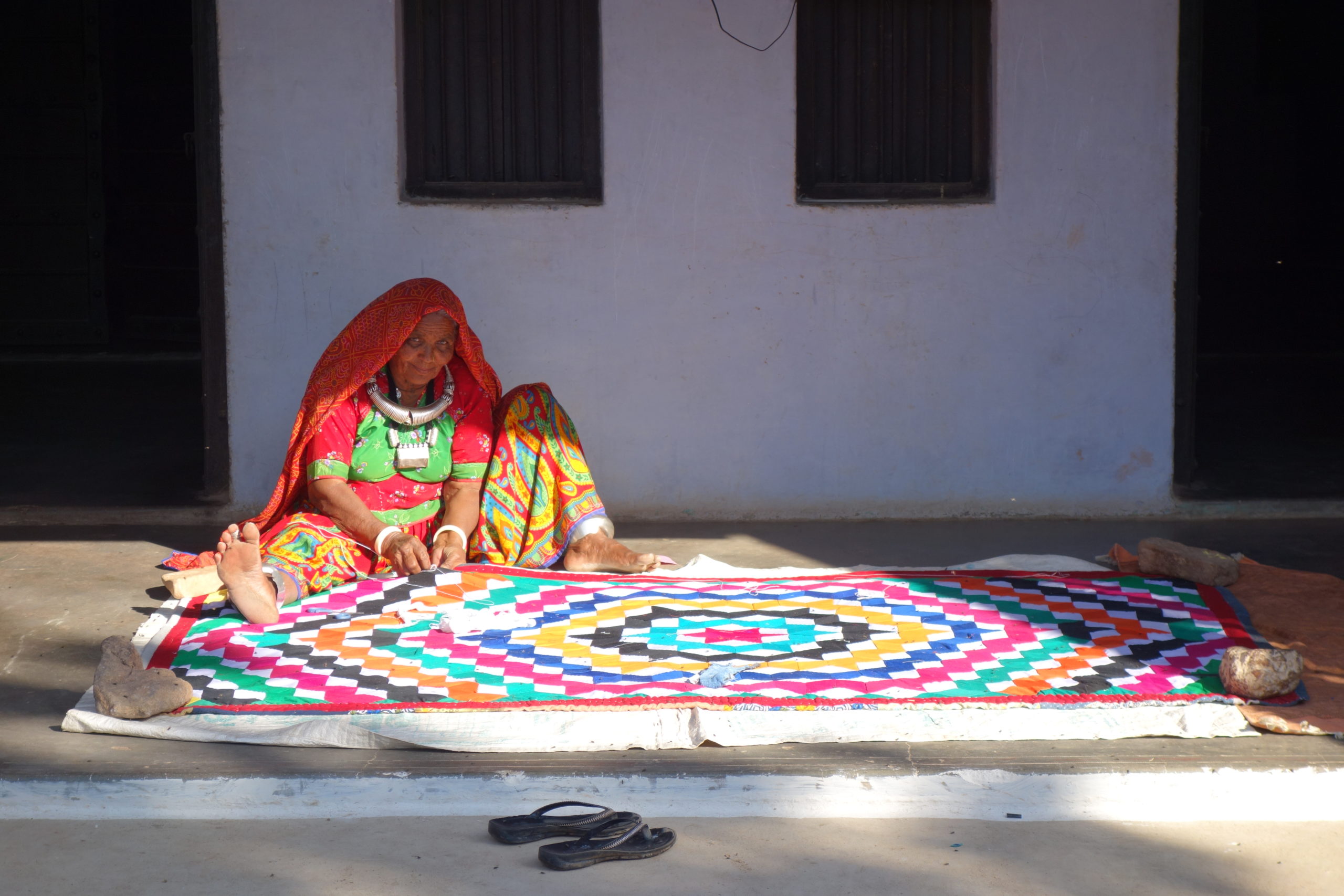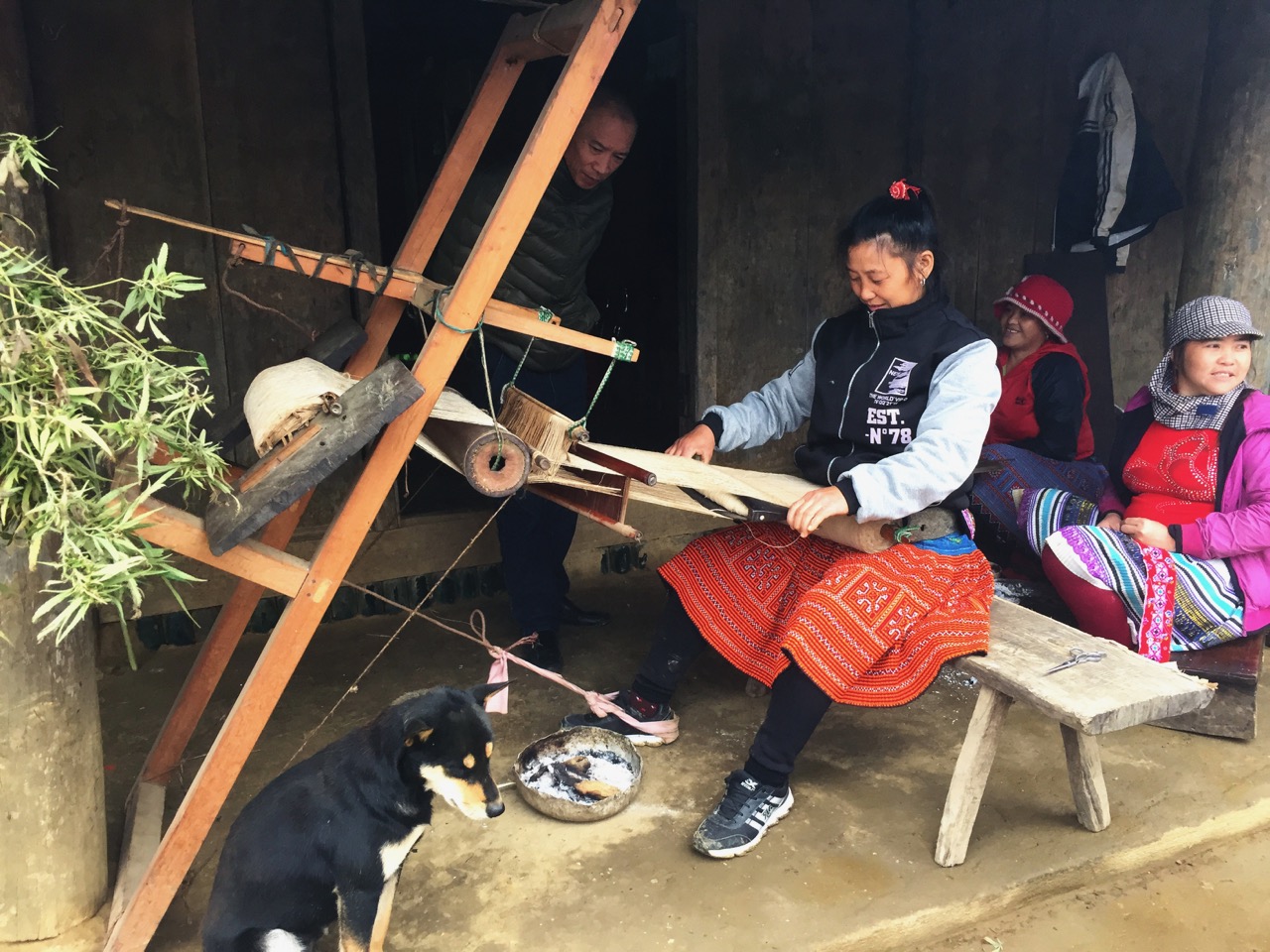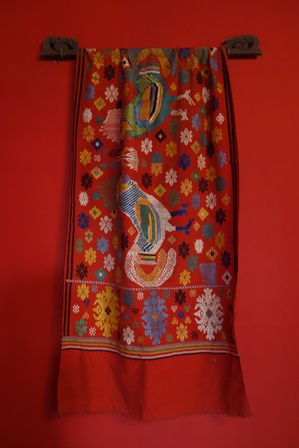In these strange and difficult times we are living in, I have been thinking a lot about how the coronavirus pandemic is having such a huge impact on the whole world, creating a knock-on effect in every corner of society and the way we live our lives, as well as how our futures look. In particular I have been thinking about how the virus will impact the many craftspeople I have had the privilege to work with for my research and write about for this blog and other publications. While in India there have been less people infected than here in the UK, the steps taken to prevent spread have hit the vast number of poor and marginalised communities hard, and there is also growing concern that if it should spread, how such a densely populated country, not all in easy access of good health care, will cope.

I have been getting in touch with some of the artisans and organisation leaders and staff members I met or worked with in India to ask how they are managing in such difficult times. Most artisans’ work has completely stopped. Some still have orders that they started before the lockdown, but most have stopped receiving orders since the lockdown began (or earlier according to the buyer’s country). Many artisans as well as organisations and craftspeople across the world have turned their hand to making masks and PPE. The family handloom weaving business headed by Vishrambhai Valji in Bhujodi village, Kachchh, has “completely shut down”. They have stopped receiving orders and many existing orders have been cancelled. For Shamji, the fourth of Vishrambhai’s six sons, the lockdown has provided a chance to be creative and develop new designs, something they would find little time to do amidst the flurry of tourists visits, administration of orders and quality checking amongst other business tasks in normal times.

However, the complete lack of tourism into Kachchh – which makes up a huge part of the Valji family’s market – which may last up to a year if not more, is a cause for concern for the future of the business as well as handloom weaving across Kachchh. Shamji thinks the reduction in business may lead to many weavers leaving the profession, which happened when the powerloom industry struck a blow to handloom when introduced several decades ago.
Crafts and the urban-rural divide
There is currently no financial or business support from the government for artisans, but many NGOs are stepping in to support some vulnerable artisan groups. In Kachchh, design education institute for artisans, Somaiya Kala Vidya, is running a campaign to support their students and alumni, their families and other artisans working for them. Ghatit Lehru of Khamir in Kachchh, an organisation founded to support and preserve the crafts, heritage and the cultural ecology of Kachchh, says the artisans of Kachchh will be “hit very badly by this pandemic”. Khamir is running a campaign to raise funds for the women hand-spinners they work with. The campaign aims to bring employment as close to home as possible for the many rural families who have relied on migration to cities to find employment. According to the India census, cited by the World Economic Forum, there is currently a total of 139 million internal rural-urban migrants and ‘the level of urbanisation in India has increased from 27.81% in 2001 to 31.16% in 2011’.
One artisan community which migrated from a rural area to the city is the Vaghari community who now live in a small, cramped Mohalla (neighbourhood) in the city of Ahmedabad, Gujarat. The Vaghari community has received long standing oppression and are traditionally prevented from entering the temples for which the mata ni pachedi cloths they paint are displayed in. The other occupations of the community such as exchanging rags and transporting cement and bricks are not officially recognised, and so public aid does not reach them. For the Vaghari there is no other income during the lockdown, and there is also deep concern about catching the virus should they need to venture out for food. Lipika Bansal has organised a fundraiser for these families.

Ganga Kanere, a business weaver in Maheshwar, whose work has also completely halted due to the lockdown thinks, like Kanji in Kachchh, that many weavers will migrate to find alternative work (In Maheshwar, the organisation WomenWeave is also running a fund-raising campaign to help cover the wages of their weavers). But this will only inflate an already growing problem in India. Cities are already over-crowded and this virus is just one catastrophic consequence of it.

The transition from handloom to powerloom over the last century in India, largely involved weavers migrating from rural to urban areas such as the thriving centres of Surat in Gujarat and Bhiwandi near Mumbai in Maharashtra. Indeed, cities are inextricably linked with the idea of the ‘modern’ and capitalist endeavours, and the textiles and fashion industries dominated first the industrial revolution and now are amongst the biggest contributors to climate change and labour exploitation.
While India has a vast resource of hand-crafted textiles across rural areas – where they are the second largest employment provider after agriculture – the government has continually positioned crafts as outmoded, and where there have been aims to support the crafts, they are more often positioned as relics of a romanticised past, limiting their market potential.
Thus, swathes of traditional artisans and other agriculture workers or potential artisans (many initiatives across rural India provide employment and craft training to former agricultural labourers, such as WomenWeave), have emigrated to cities over the past few decades. This move, according to journalist Krishna Kumar[1] , was encouraged by a ‘generalised’ belief that “providing basic amenities such as running water, electricity and jobs to rural people becomes easier if they move to a city”. This logic influenced government policies and an expansion of slum dwellings led to the increasing invisibility of these migrants. By contrast, the pictures we have seen of crowds walking on foot back to their homes as lockdown was announced were seen by, and shocked, the whole world.
Many of these migrants are key contributors to the global fashion industry, as well as the domestic fashion industry which has grown exponentially in India over the last three decades as manufacturing and the market has become increasingly liberalised. The fashion industry has come to an almost complete standstill since the global lockdowns came into effect. In neighbouring Bangladesh, which has the world’s second largest clothing manufacturing industry after China, workers were told to leave without being paid, as retailers cancelled orders forcing suppliers out of business. Recent media reports suggest that many of these factories are re-opening despite the threats of the virus spreading.
Is craft the future of sustainable fashion?
The coronavirus crisis comes seven years after the collapse of the Rana Plaza garment factory in Bangladesh which killed 1,134 people. This disaster, which unions described as “mass industrial homicide” was thought to provide a wake-up call to the fashion industry. Investigations into the garment industry were widely conducted and disseminated in the media, yet this seemed to have little effect on consumers’ shopping behaviours. While surveys have found that ethics and sustainability in fashion are high on the agenda of both millennial consumers and the brands they shop with (Baizley, 2019 WGSN), in reality, sales of brands such as Boohoo and Pretty Little Thing which have been widely accused of selling clothes costing ‘less than the price of a sandwich’, have increased and only a few businesses are including the UN’s sustainable development goals in their business strategy.
This may be because consumers are not faced directly with the impact the products they buy are having on the environment or the people who made them. The production side of fashion being geographically distant helps to maintain a psychological distance and an attitude of the ‘west and the rest.’ This binary way of thinking along with other dualisms such as: fashion/indigenous clothing, design/craft and formal/informal knowledge; are rooted in colonial and modernist attempts to divide society in accordance with political and economic needs.
I keep hearing people talk of the virus making us realise exactly how interconnected the world is, as well as providing a final straw in forcing fashion to slow down and move to much more sustainable practices. Could such a revelation encourage the breaking down of these binaries? Will equality across race, class, gender and ability be taken much more seriously realising how much we all rely on each other? Considering these questions, there is surely a place for sustainable agendas and the protection of craftspeople and their rich design and skill base and heritage to be brought closer together.
Some luxury fashion designers have already produced collections incorporating traditional crafts as a central feature, yet too often the artisans who make the pieces are anonymous. My research on design education for handloom weavers in India found that design learning is inextricably linked with the learning of craft skills which is done in the home – where weavers are surrounded by weaving – from a young age. Knowledge of materials helps weavers visualise the function and aesthetics of the final product. Expertise in the process of techniques such as extra-weft helps weavers visualise and plan-out motifs. Then there is the wealth of scientific and mathematical knowledge involved in weaving and its many ancillary processes. When artisans are simply given designs to execute it devalues artisans’ embodied knowledge and reduces their status to labourer. This can lead to artisans seeking alternative employment and ancestral knowledge becoming lost.
The educational programmes SKV and THS help students to build awareness and appreciation for their traditional designs and to build upon them. Students have the opportunity to interact with target markets and develop confidence and skills to communicate the ideas and story behind their work. Business, social media and marketing skills are also developed, all of which equip graduates with the agency to set trends and influence the market, as well as social change in their community.


Influential fashion trend forecaster Li Edelkoort predicts that “true artisans have a future,” and “there is an enormous future for beautifully-made handicraft with a real identity.” She also calls for an increase in artisan-owned ‘ateliers’, which is exactly what design education institutes such as Somaiya Kala Vidya and The Handloom School are encouraging their students to do. The use of craft for creating sustainable fashion has been widely explored, and it is also considered particularly viable in the luxury fashion market.
There is an urgent need to change the broadly-held perceptions of the handloom and other craft industries as skilled labour and realise their full creative potential. Additionally, more attention must be paid to rural areas of countries where crafts are an important source of livelihood and artisans are given more recognition and voice. In this way, crafts can become both more desirable to potential artisan-designers (and other roles in the industry) as well as global markets, to increase rewarding employment opportunities and elevate the value and perception of the craft industries globally.





2 Comments
Carole Douglas
Thanks Ruth. I too am in regular contact with artisan communities. This sector will survive as the traditions are well enmeshed in the artisan communities. The skills will continue. However the market for the work has taken a huge blow. I can only speak for myself and from my small role in the greater scheme the virus has effectively killed my business. My winter range and thousands of dollars of my cloth sit in an empty stitching unit in Mumbai. This may never be retrieved and I still have to pay rent in my shop. I have no new stock to offer as we come out of shutdown. There will be no tours in the foreseeable future. And I can’t teach due to restrictions. I’m not alone in this. It’s tough in every quarter. Ahmedabad has just gone into emergency super lockdown giving people no chance to stock up on food and I have just sent relief money through! It now can’t be collected! And The ripples are unimaginable spread into every nook and cranny on the planet. You stay safe and I look forward to seeing you in India on the ‘other side’!
Thank you Carole. I have mainly focused on the producer side here, so its good to have your insight from a market perspective. I’m sorry to hear the virus has affected your business so badly. Is the Australian government providing financial support for small businesses there? I suppose this post is looking to the long-term future, but for business to start up again, there’ll need to be some kinds of scheme to kick start it. I really hope you can get your business up and running again. You stay safe too.